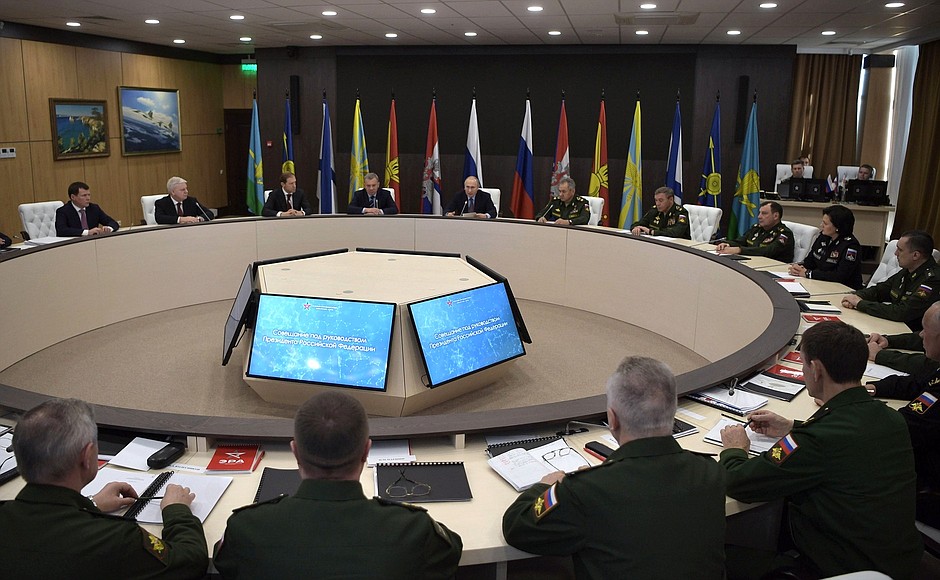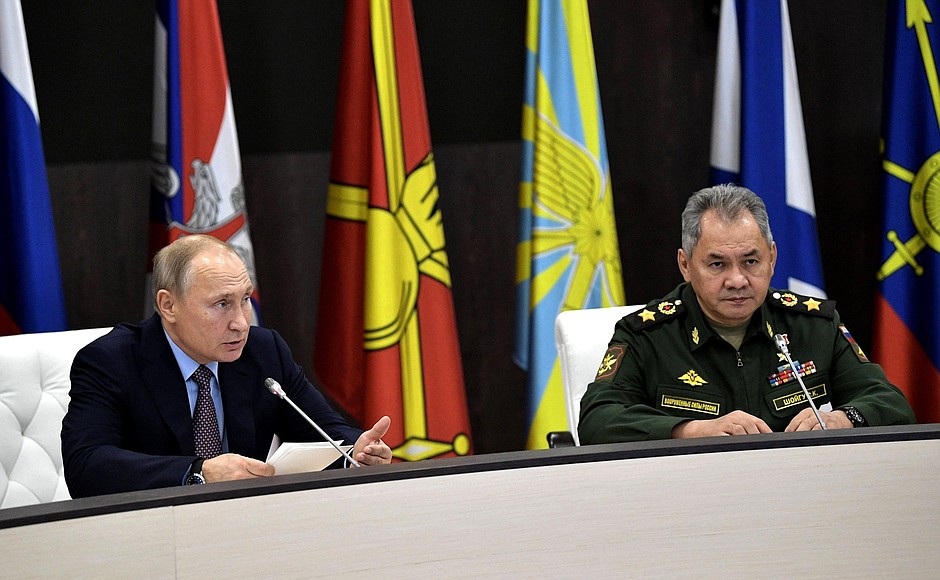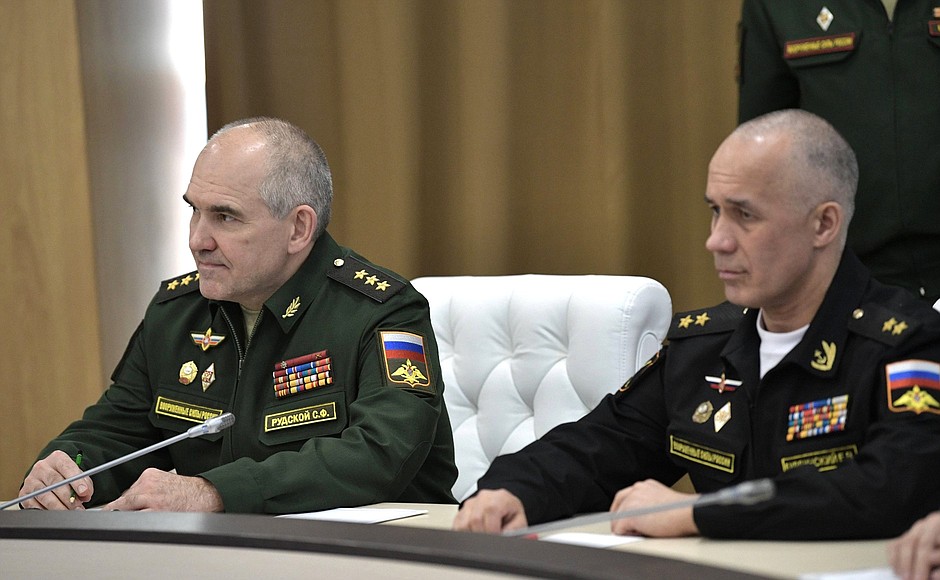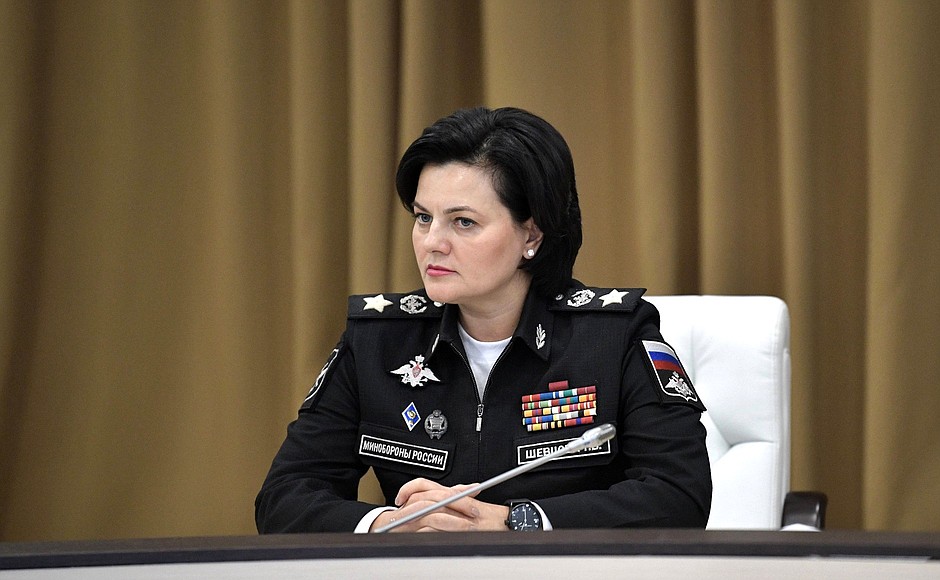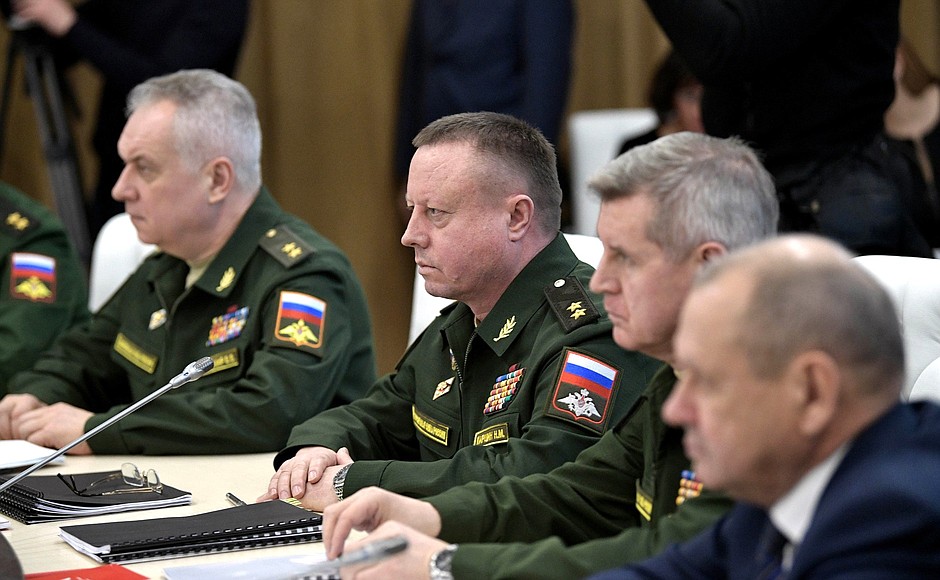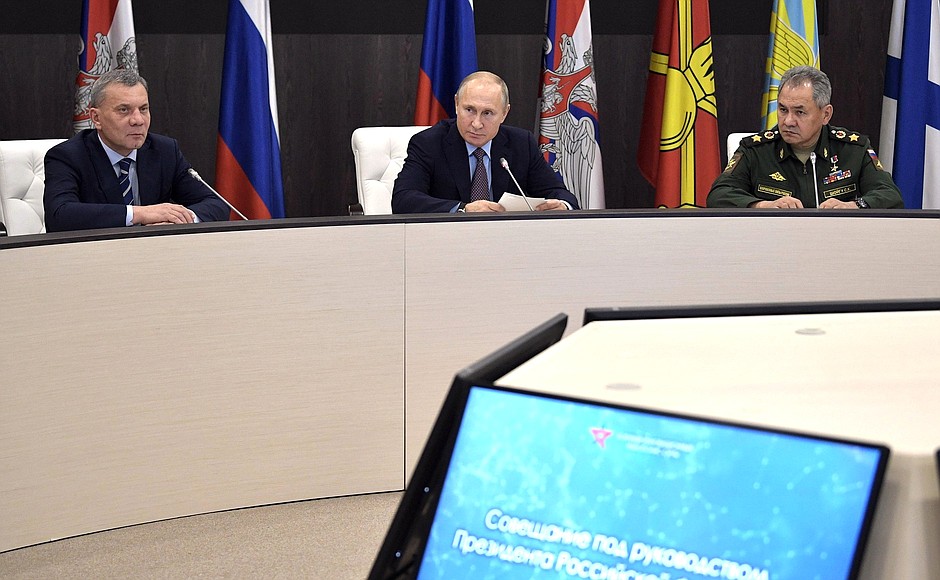President of Russia Vladimir Putin: Good afternoon, colleagues.
We are at the ERA Military Innovation Technopark in Anapa. I do not know whether you had a chance to take a look at what has been done here lately.
A great deal of work has been done, without a doubt. This centre will start operating in full capacity by the end of next year or in mid-2020 (by the end of the next year, Mr Shoigu says).
What I saw made me happy indeed. There are modern scientific research and industrial complexes that include numerous laboratories – there will be a total of 18 laboratories working in eight priority areas.
I am sure that all this will promote efficient development and, most importantly, rapid introduction of cutting-edge technologies to areas of defence and security. Of course, this will also strengthen the entire sphere of science and innovation in Russia, since, as all of you must have noticed, all laboratories are directly connected to the country’s leading scientific centres.
And not just scientific centres, but also centres engaged in practical work, say, in the sphere of healthcare, as you have noticed. This includes research centres and, say, the St Petersburg Military Medical Academy.
Working directly allows for more efficient use of this country’s equipment – meaning what we have here, in this country – high-technology complex and expensive equipment. That, of course, is what makes this facility so valuable: we can find many experts from all these facilities working here at this centre, and for this centre; they work both directly from here and from their workplaces, scattered practically all over the territory of Russia.
We have representatives of the defence industry here, and I ask them to take this into account and to establish close ties with this centre and work productively here. Especially because the defence and civilian technology go hand in hand, often intertwining with and enriching each other. Therefore, any formal dividing lines between industries are often relative here.
Yesterday we talked about conversion programmes, which is where you can work together. But the most important thing is that young people have to pass a stringent selection procedure at our leading universities to secure a place here.
Selection is an essential thing. I have talked with some of the young people, who are not simply satisfied but are really inspired by the possibility of working here. They fought tooth and nail to get here.
Some of them have two degrees and top qualifications. In this way, we are creating the basis for the future development of our armed forces. This is extremely important.
Therefore, I would like to thank all those who are doing this, including Mr Shoigu and all our other colleagues who helped implement this project. I would like to wish success to the personnel of the Era technopark and the achievement of their goals in their particular fields of activity.
Colleagues, today we are completing yet another series of meetings with Defence Ministry leaders and defence industry heads. We have discussed the key spheres of development of our armed forces and the implementation of state defence contracts and mapped out further steps to boost the development of our defence companies as well as research and design centres that are creating new promising weapons and military equipment.
Corresponding instructions will be issued to the Government, ministries and agencies based on the results of these meetings.
Today we will discuss progress in the creation, production and generation of missile and armament supplies. We will analyse how well this industry is adapting to the current economic conditions and how the system of state material reserve is developing.
Let me note that the ammunition industry produces the largest volume of products in the Russian defence industry in terms of both overall volume and stock list and it must be advanced and be of the very best quality.
Of course, rather than the notorious “dummies” we require smart high-precision ammunition that increases the capacity of current and prospective weapons systems. Therefore, I would like to point out that they save up significant funds.
What was previously achieved with costly weapons systems can be solved today with the aid of quite inexpensive systems by using highly effective advanced high-precision ammunition.
In this sense, I would like to remind you that in recent years we have done a lot to upgrade defence industry enterprises as part of the State Programme for the development of the defence industry, including the renewal of machinery. In addition to this, new production facilities using cutting-edge scientific and technical innovations have been created.
It is important to continue to develop defence industry enterprises that produce missiles and ammunition as well as to upgrade the organisation of production.
Of course, the industry products are becoming ever more complicated and high-tech. Most samples have long production cycles due to the capacities of the enterprises that carry out the final assembly as well as the plants that provide the components, the supply of raw materials and easy and rational logistics of nodes’ and components’ delivery.
Nevertheless, we must aim to decrease technological production cycles of missiles and ammunition. Besides, we must calculate the exact number of missiles and how much ammunition is required for the army and navy to fulfill their job to protect Russia’s security.
And, of course, we must not limit ourselves to creating reserves of material and technical resources. It is important to organise their proper and safe storage and timely renewal, as well as timely utilisation, of course. I am referring here to the full cycle.
Let us get down to work.
<…>
